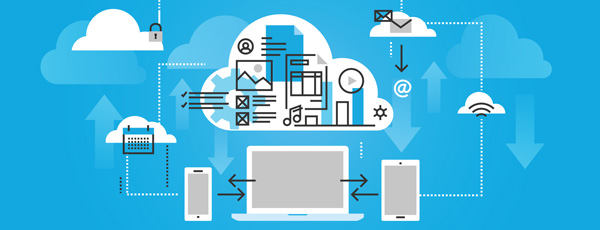Cloud & Hybrid IT Monitoring Checklist

When developing a cloud monitoring strategy, you’ll need to cover the 5 essentials. This handy checklist will help you vet any new cloud or hybrid IT infrastructure monitoring solution to make sure that your team establishes the visibility needed in this new environment.
Everyone knows that IT departments have silos. Different groups want to protect the data that sits in their silo. This results in each group having their own reporting tools and sets of data. While convenient for the groups, this method costs management a lot of time to compile and aggregate all of the reports into one holistic view. With a truly multitenant solution, you can ensure business units only see the data they are entitled to see, and even have their own views and dashboards separate from other business units. It will also ensure you can access aggregated views of the data, saving management weeks of work and frustration. The result is high employee morale, respected cultural divides between IT departments, and a holistic picture of IT’s health.
Technology is constantly changing. First, we had the onset of virtualization, then external cloud services hit the market, and now we are at the cusp of the software-defined data center. One thing is certain, technology will not stop there. As different vendors emerge, new mediums for transmitting performance data also are emerging. Beyond the simple SNMP protocol, vendors such as VMware, Microsoft, and Amazon are delivering performance data across proprietary channels. Your solution must be flexible enough to support any proprietary channel in the market today and in the future. Lack of flexibility could cost you the ability to gain a competitive advantage with new technologies.
We’ve all been there. An expensive enterprise IT solution has been purchased and enormous amounts of money have been invested, only to discover that it takes years, and hundreds of thousands to millions of dollars to get a usable solution. It’s key to find a platform that will allow you to quickly “plug it into your environment.” The appliance model (whether virtual or physical) or even an Amazon Machine Instance model coupled with out-of-the-box templates really makes sense here. Something you can have running a few hours later drives a quick return on investment.
With multiple events coming from multiple technologies, having one console that brings everything into one view can make a huge difference operationally. Pairing this with built-in event correlation, ensuring multiple events related to the same issue or technology are correlated, along with the previously mentioned multitenancy, ensures the right events go to the right people and eliminates duplicate events.
Few organizations aspire to flat or declining growth. If your goal is to drive revenues and/or deliver greater differentiated services, finding a solution that can grow with you (no matter how much you grow) is essential. Look for a product architected to support over 2 million devices. However, be sure it doesn’t simply provide the ability to “monitor” but rather provides context-driven views into massive amounts of data that matter.
If an organization focuses on these core capabilities along with the ones highlighted in the Top 20 Tools Needed for Hybrid IT white paper, they will be well armed for this new hybrid IT world. And if hybrid cloud monitoring and optimal visibility is important to your enterprise, make sure you check out Observer SightOps, a solution that fulfills all the requirements of the checklist – and some that may be added in the future.




